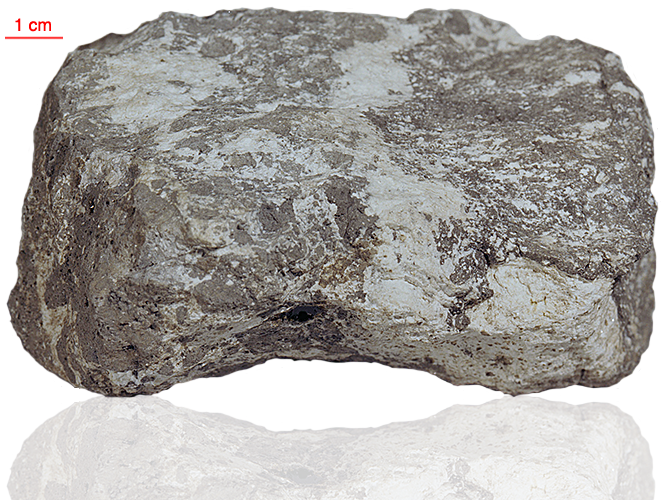
Fact sheet
64475 is a complex breccia containing anorthositic clasts with coarse-grained cumulus texture or with granulitic texture. It has been suggested that the dark phase was originally the matrix of the rock, but that at a later time portions of the white cataclastic anorthosite were mobilized giving the appearance that the white material is invading the dark. Rotation 1 shows dark material and a large pyroxene (inverted pigeonite) crystal. Rotation 2 shows a rounded anorthosite clast within the dark material.
The sample weighed 1032 grams before analysis and has not been dated.
Further details of this and other Apollo samples are here: http://curator.jsc.nasa.gov/lunar/
The Apollo 16 landing site was in the hilly region around Descartes crater in the lunar highlands. The landing spot was chosen to allow the astronauts to gather geologically older lunar material (Descartes Formation and the Cayley Formation) than the samples obtained in the first four landings, which were in or near lunar maria.
The mission lasted 11.1 days, with a stay on the lunar surface of 71 hours. The crew were on the lunar surface for 20.2 hours during which they traversed approximately 27 kilometers and collected approximately 96 kilograms of samples.
Apollo 16 was launched on 16 April 1972.






